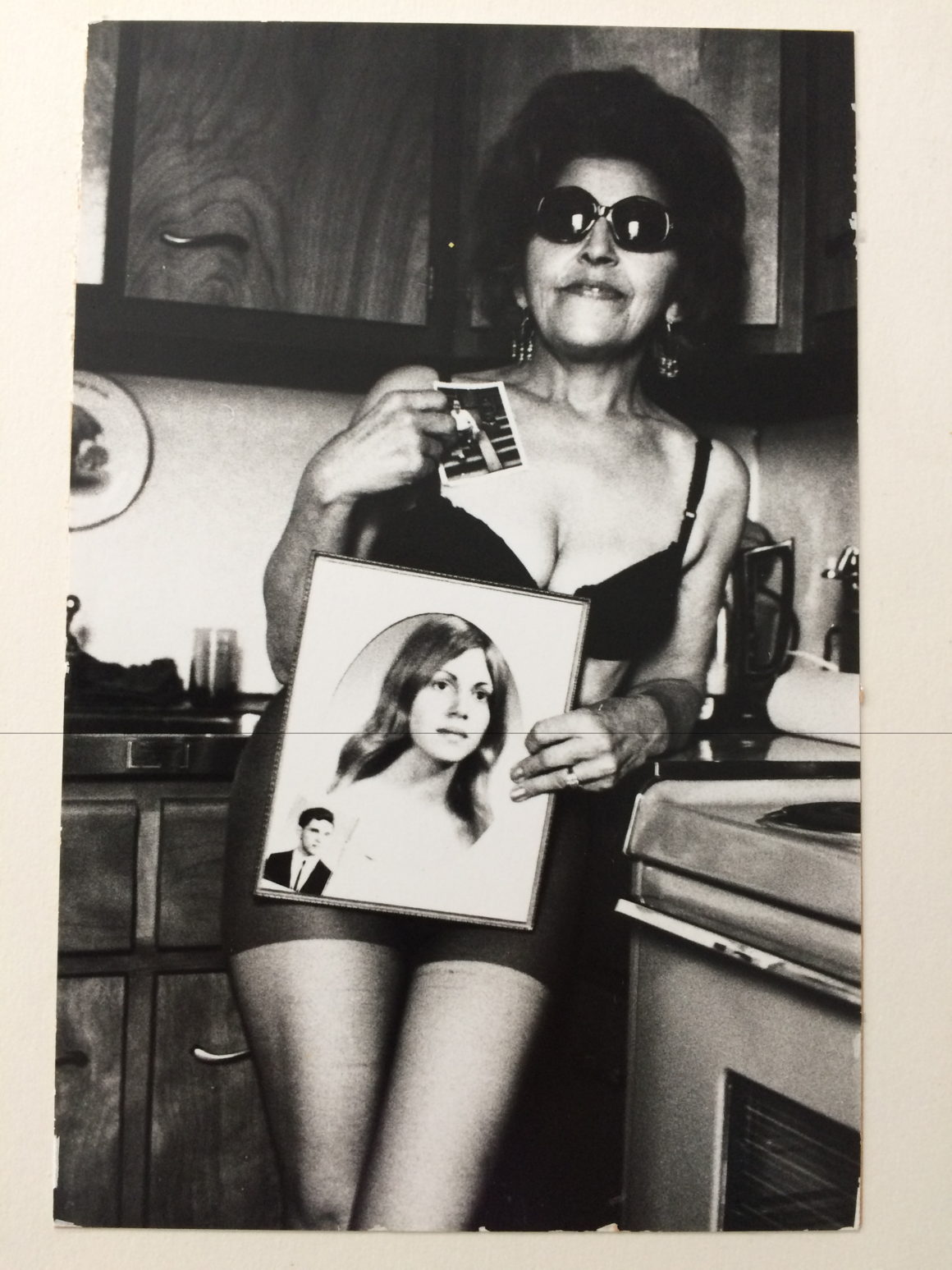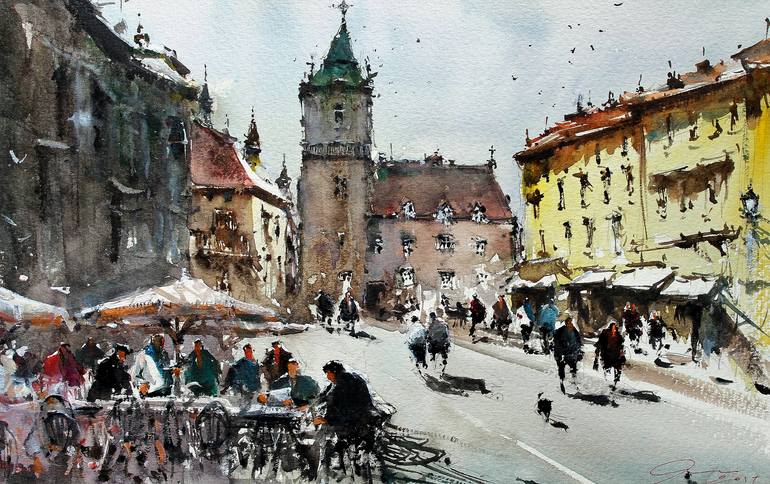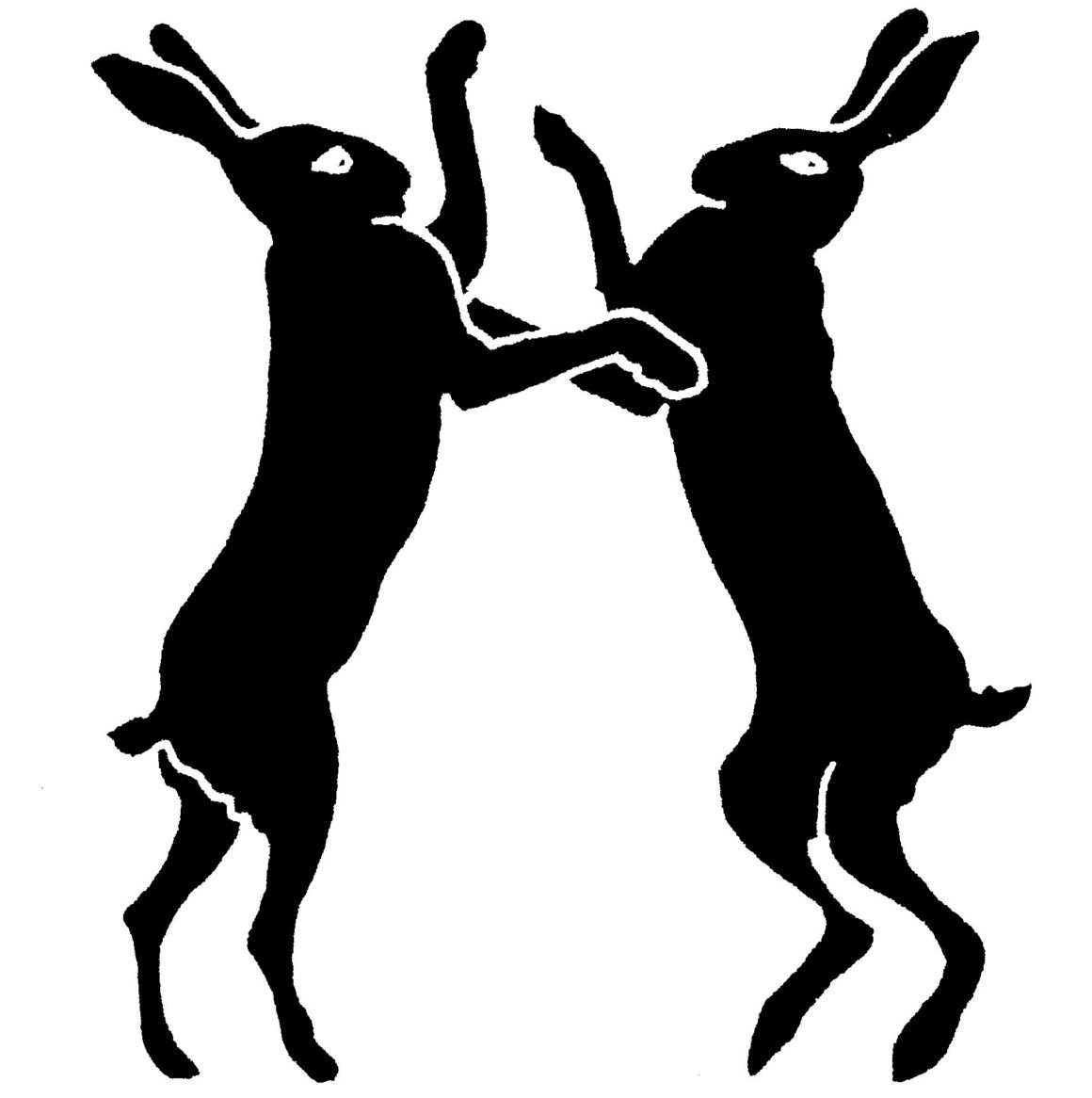Summer vacation was almost here, but my photography professor, Jeff Weiss, said going on vacation was no reason to stop shooting pictures, that making pictures every day of your life was how real photographers lived. I wanted to be a real photographer.
That summer after my freshman year of college, I stayed with Mom and my stepfather George at their Philadelphia duplex and spent days on Kensington’s streets, a lower middle class neighborhood where the movie Rocky was filmed, shooting candids of people on the street, pictures of the El that clattered by on train tracks overhead, and reflection shots of myself in various storefront plate glass windows. The term “selfie” was decades away.
Before summer break, our class had been experimenting with shooting nudes so one day I asked my mother if she’d let me do nudes of her.
“Oh, no, Barbie,” she said, “I could never do that. But I’ll put something on and you can do your pictures.”
My mother disappeared into her bedroom and I loaded film onto my Canon SLR. I smoked one of Mom’s filterless Pall Malls and skimmed the Philadelphia Inquirer, hoping and praying my mother would wear something interesting.
Her accordion bedroom door swished open and seconds later she stood before me in a black bra, black pantyhose over underwear, black high-heeled sandals, and round black-rimmed sunglasses.
“This okay?” my mother asked.
What she chose was better than any outfit I could have picked for her. And her look was far quirkier than nudes would have been. And besides, my mother and I couldn’t have handled her nude. No one in my childhood home ran around in his or her undies, much less naked.
“It’s perfect,” I said, and we giggled.
Even though my bipolar mother and I had a combustible relationship, we still had rare intimate moments that were pure fun.
“What should I do?” Mom lit a cigarette as she stood in the kitchen doorway, holding onto the elbow of the arm that held the ciggie.
I opened the door to the fridge and she propped her black stockinged foot on the shelf in front of the round white eggs.
“How about you sit up here,” I said, and she hefted herself onto the orange Formica counter where I shot a photo of her smoking in an alluring pose.
For another photo we gathered snapshots of my stepfather, brother, and me. She slipped the photo of my stepfather under one bra strap, another of my brother under the other bra strap, and she held my framed high school graduation picture in front of her bare belly.
Thirty-six frames later, we were done. She went to get changed while I rolled my film and extracted it from the camera.
We were exhausted, but we were also exhilarated. I was gratified that my mother and I had made a new memory, happy in the making of art. At the time, this was the ultimate act of sharing for me. It was wonderful to share it with her.
![]()
Back at school that September I spent my first week in the dim red light of the darkroom where I developed black and white film and printed 8x10s of my mother, as well as shots of the Philly landscape.
Two weeks later I was up for critique. With an audience of classmates, the images of my mother seemed more erotic and revealing than nudes would have been. So instead I pushpinned the Philly photos into the canvas-covered board and left the mother photos in a pile on the floor by the end of the board. After my classmates talked about the photos, Jeff strolled along the wall, hands in his blue jeans’ pockets.
He stopped at the pile of photos on the floor and said, “What’s this?” He picked up the photos and began riffling through them.
“Just images of my mother,” I said
He held one up. “This is your mother?” He unpinned my city photos, let them drift to the carpeted classroom floor, and replaced them with a dozen photos of my mother.
My classmates crowded around the pictures.
“This is the real deal,” Jeff said, his green eyes catching fire. “The landscapes are nice. But your mother pics have your voice all over them.”
At the time, I wasn’t sure what he meant by voice. I had never heard this term. I would hear it stressed many times after, how vital it was for an artist to find his or her voice, to create art colored by his or her own idiosyncratic vision and style. But at the time, it was all new.
As the group chatted up my photos, I wondered how my mother would feel about images of her pinned to the board, how she would feel being objectified and talked about in the third person. Actually, she would have loved it.
One guy said, “Your mom’s hot!”
I suppose she was, but as a kid, her sexuality embarrassed me. She wore low cut blouses that advertised her cleavage. She never feigned prudishness. She was attractive, was comfortable in her skin, and wasn’t ashamed of anyone knowing it.
It no longer bothered me. Our photo session was a bridge where we could share a moment.
She may have been hard to get along with, due to her mental illness, but we also shared fun times, and these photos prove we shared remarkable mother/daughter moments. I was sure my friends didn’t have mothers who let them shoot intimate photos with them as the focus.
When I remember my mother, who died soon after 9/11, I focus on all that was not lost. And when I look at these photos of her in her underneaths, I can almost smell the cigarettes we used to smoke, taste the coffee we drank from her percolator, and hear us howling with laughter in her Philadelphia kitchen that summer after my freshman year.
* Originally published in Beach Reads, 2018 (Laguna Beach, CA)





